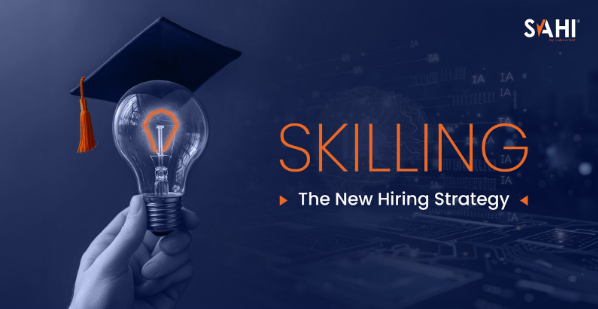The job market is experiencing a major transformation. With the rise of technologies like AI, automation, and robotics, the way we work is evolving—and so is the hiring process.
Across industries—whether it’s logistics, manufacturing, retail, healthcare, or banking—the approach to hiring is no longer just about finding the most qualified candidate from a pile of resumes. In today’s competitive talent landscape, the smartest companies aren’t just looking to recruit talent; they’re focused on developing it.
India’s Unique Workforce Reality
India’s staffing landscape is truly one of a kind. A significant portion of the workforce is divided into three main categories:
– Blue-collar roles: These include delivery agents, warehouse workers, drivers, and factory operators.
-Grey-collar roles: This group consists of field technicians, supervisors, sales agents, and customer support representatives.
– White-collar: These positions cover data entry, HR support, financial services back-end roles, and junior executives.
While these roles form the backbone of India’s economy, they’re also the most susceptible to disruption and in dire need of strategic upskilling. As the job market continues to evolve, it’s crucial for both employers and employees to adapt and grow together.
For years, hiring in various sectors was a numbers game – ‘fill positions quickly, keep costs down, overlook long-term career growth or employability’. But with automation taking over repetitive tasks and AI reshaping the way we work, skills are becoming the real currency—not just static job titles.
Smart employers are now prioritizing reskilling. Instead of scrambling to find a small pool of ready-made talent, they’re investing in developing their own talent pipelines. This approach not only speeds up the hiring process but also saves money and builds greater loyalty among employees.
Job seekers are starting to realize that the job market has transformed dramatically. A college degree or a one-time certification just doesn’t cut it anymore when it comes to landing a job—or even a long-term career. This shift is especially noticeable in blue-collar and grey-collar sectors, where learning agility—the ability to adapt, learn on the job, and continuously upskill—is becoming far more valuable than traditional qualifications.
It’s all about being adaptable, agile and ready to learn in this fast-paced world!
What does ‘Agility in Action’ look like in real time?
1. Warehouse Worker to Inventory Analyst
- A 22-year-old warehouse picker starts with basic physical tasks.
- Learns to operate handheld scanners and update inventory digitally.
- Volunteers to support order tracking, learns Excel and ERP basics through mobile learning.
- Becomes an inventory assistant, moving up the value chain—despite having only completed high school.
Agility in action: Adapts from manual labor to semi-technical digital skills in under a year.
2. Field Technician to IoT Specialist
- A mobile repair technician is exposed to smart home installations.
- Learns to handle IoT devices like smart locks and voice assistants.
- Enrolls in a 6-week weekend IoT maintenance course via a skilling partner.
- Gets placed as a smart home technician with 40% higher pay.
Agility in action: Builds a future-proof skill set beyond their original domain.
Continuous Skilling – a Non-Negotiable
AI is reshaping the entire employment lifecycle. From predictive maintenance in factories to AI chatbots in customer service, roles are evolving every 12–18 months. That means continuous skilling has moved from being a competitive edge to a survival strategy.
Companies that commit to structured skilling programs are already seeing the benefits:
- Faster adaptation to market changes
- Higher retention and lower attrition
- Increased productivity and innovation
- Greater internal mobility and reduced hiring costs
Skilling in Action: What It Looks Like
- Work-integrated skilling: Training that happens on the job, not just in classrooms. Think: warehouse workers learning how to operate new scanning tech while earning a wage.
- Micro-credentialing: Short-term, job-specific certifications that are affordable and accessible, like POS training for retail staff or CRM tools for telesales agents.
- Digital-first learning: App-based learning modules, gamified assessments, and AI-driven upskilling journeys tailored to each employee’s growth path.
Why This Matters:
India’s demographic dividend is real—but only if we harness it right. With nearly 1 million youth entering the workforce every month, and a large chunk of them seeking livelihoods in general staffing roles, the quality of their skill development will define the future of our economy.
In all the above examples, workers didn’t wait for ideal conditions or degrees—they responded to opportunity with curiosity, adaptability, and effort. Employers who recognize and support this mindset are the ones building the most resilient teams.
In 2025 and beyond the future won’t belong to the most qualified on paper—it will belong to the most adaptable, most agile, and most upskilled.
It’s time to stop looking for the perfect hire and start building them.



